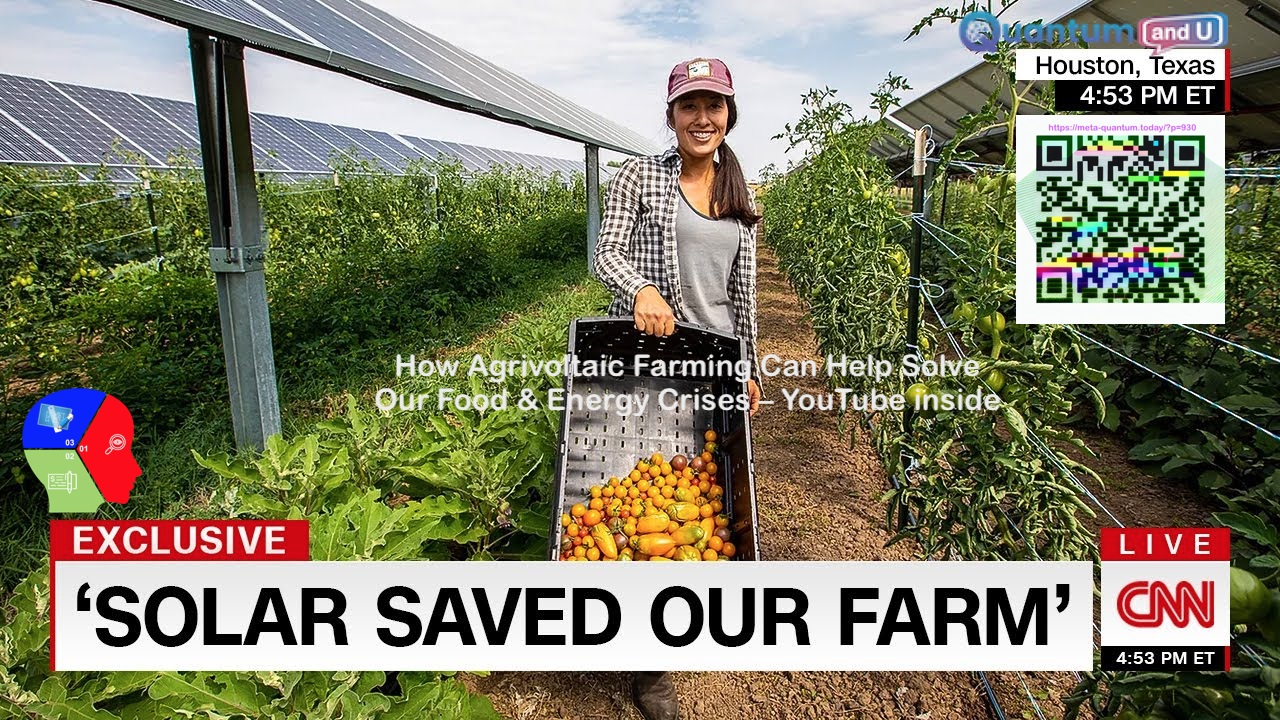
Introduction:
As the severity of global warming and resource depletion intensifies, the innovative approach of agrovoltaic farming emerges as a solution to our acute food and energy predicaments. This elucidative YouTube review delves into the workings of this groundbreaking strategy, which marries solar energy initiatives with agricultural processes. Agrovoltaic farming harmoniously unites food production and renewable energy generation on the same land, revolutionizing traditionally distinct activities. This method optimizes land use, a critical factor in densely populated regions where land availability is constrained, concurrently yielding both crops and energy. Additionally, agrovoltaic farming enhances environmental sustainability by mitigating deforestation and reducing the necessity for extended power transmission, thereby amplifying energy efficiency. The YouTube review presents a comprehensive evaluation of successful international agrovoltaic ventures, their economic advantages, and their capacity to stimulate rural economies through job expansion and avant-garde farming methodologies. Enriched with expert perspectives and scientific research, the review underscores the benefits of agrovoltaic farming and its potential to reshape the future of food and energy production. In summary, agrovoltaic farming proposes a viable resolution to our food and energy challenges, and this YouTube review serves as an insightful guide to understanding its potential and its contributions towards planetary health.
Related Sections with Details and Examples:
- Converging Crises: The world is experiencing a confluence of destabilizing disasters, including the impact of climate change, rising food and energy costs, and the aftermath of the COVID-19 pandemic. Agri-food systems emerge as a promising approach to combat climate change, eradicate poverty, and ensure universal access to food. Scaling up technologies like off-grid renewable energy generation and precision agriculture could significantly improve food production and farmer income.
- The Concept of Agrovoltaic Farming: Agrovoltaic farming involves strategically integrating solar photovoltaic projects into agricultural activities. This approach allows the sharing of sunlight between the energy conversion processes and agriculture, mimicking the principles of agroforestry. By providing shade, this system supports multiple layers of agricultural productivity on the same plot of land, promoting both renewable energy generation and agriculture simultaneously.
- Types of Agrovoltaic Technologies: Agrovoltaics can shield crops from adverse weather conditions and reduce water usage. For instance, solar shade can save significant amounts of water, making it a valuable strategy in regions prone to drought. Different agrovoltaic setups are possible, depending on the climate and land use practices of the area. Examples of ongoing projects in various regions, such as the USA and Europe, demonstrate the versatility and potential of agrovoltaic farming.
- Challenges and Potential Solutions: While agrovoltaic farming shows immense promise, it faces challenges that need to be addressed. These include developing a management model for farming operations and maintaining PV plants, ensuring compatibility with current agricultural practices, and managing rising costs of solar panels. Public incentives, farmer involvement in design processes, and accelerated licensing can facilitate the adoption of this technology.
Conclusion:
Agrovoltaic farming presents a robust solution to the food and energy crises, enabling net-zero emissions via renewable energy production and sustainable farming. This synergistic blend of electricity generation and agriculture on a singular plot of land yields benefits for an array of stakeholders, from farmers and energy consumers to the environment. As the sector sees a surge in trials and breakthroughs, the agrovoltaic market begins to unfurl, signaling a future abundant with promise.
References:
- Solar Power Europe : https://www.solarpowereurope.org/
- University of Maine research: https://umaine.edu/research/
Takeaway Key Points:
- Agrovoltaic farming combines agriculture and renewable energy generation, offering a promising solution to food and energy crises.
- Various agri-food technologies, when scaled up, can improve food production and farmer income.
- Agrovoltaics provide shade to crops, reducing water usage and offering resilience in the face of climate change.
- Challenges include management, costs, and integration with existing agricultural practices.
- Despite challenges, agrovoltaics show tremendous potential in achieving net-zero emissions and supporting sustainable agriculture for the future.


